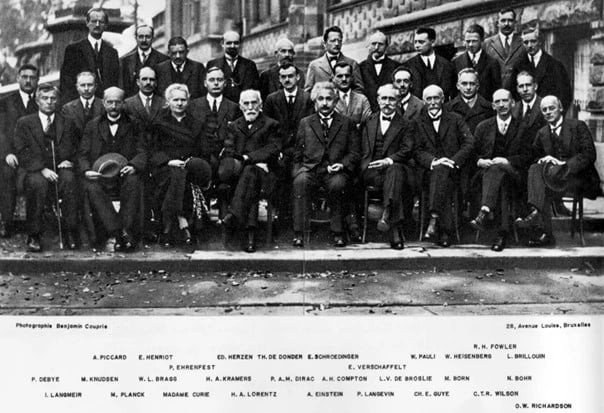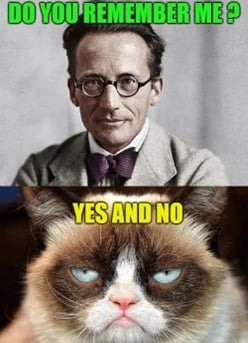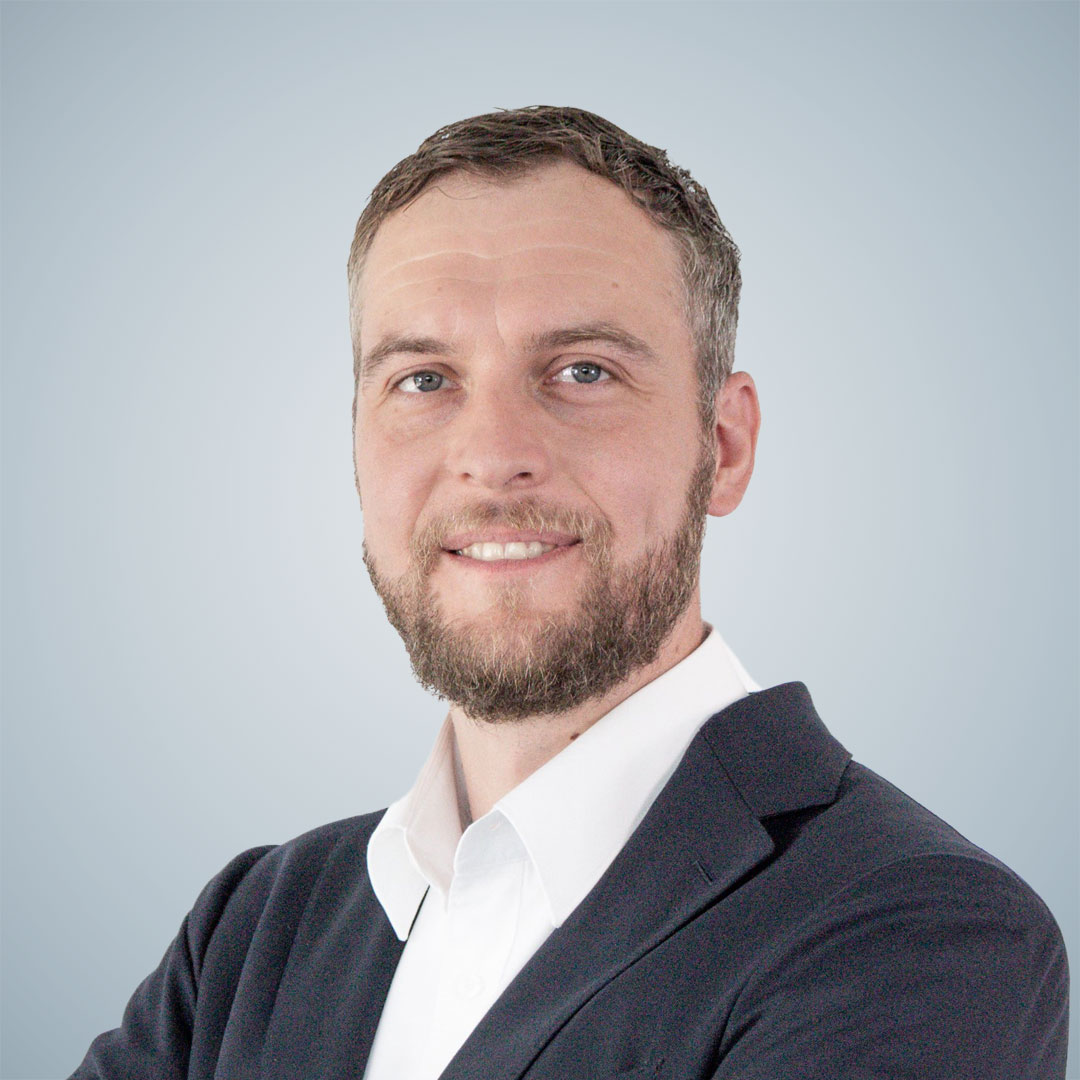- Olga Schmidt
- 12.12.25
- 2 min
- Success factor sustainability
Your contact person
Dr Martin Garbos
6.648 billion people around the world use smartphones, devices that only function due to the mind-boggling laws of quantum mechanics. Beyoncé Knowles, on the other hand, “only” has 273 million followers on Instagram – although it is somewhat like comparing apples to oranges, the claim that quantum technologies are more popular than Beyoncé is true.

FIGURE 1. Participants of the 5th Solvay Conference. This picture holds the record for capturing the most Nobel Prize winners at once – 16 of the 29 people in the photo have won the award. Marie Curie won two, yielding a total of 17 Nobel Prizes in the photo.
Another fact about quantum technology is that its principles were well known to mankind even before we knew how to produce film-based colour photography, as the below example photo from 1927 impressively shows (Brussels, 5th Solvay Conference on “Electrons et Photons). Already at this time, the quantum pioneers (Curie, Einstein, Schrödinger, …) vividly discussed the physical principles of quantum technologies.
So, what is all the fuss about the current quantum hype? We are dealing with century-old technology, right? The answer to this question is very common in the field of quantum tech, “Yes and no”.
Although quantum mechanics have been well known for a long time, their transfer into real-world applications like transistors, lasers and the resulting computers, smartphones, GPS navigation, etc. was a slow process. None of the pioneers could have ever imagined the technological potential. That, for example, a child living in Europe could call their grandmother living in Australia in real-time, using a hand-held device.

FIGURE 2. Nerdy joke about Schrödinger's cat – Erwin Schrödinger (top) proposed a thought experiment where a cat (bottom) is placed in a box together with a poison flask that shatters when a radioactive atom decays. Since these atoms have a quantum state between “decayed” and “non-decayed” before they are actually being measured, Schrödinger claimed that as long as nobody opens the box, the cat is in a state of “dead and alive”.
In the last years, quantum technologies have been developed up to a point where it is now possible to control and manipulate single quantum states, rather than ensembles of a multitude of quanta. This opens a world of new effects and applications and is referred to as the “Second Quantum Revolution”. New possibilities emerge in the fields of quantum computing, quantum sensing and quantum communications. Successful industrialisation-enabling technologies such as photonics, cryogenics, semi-colour tech, vacuum tech, diamond tech and more. There are also other key aspects such as miniaturisation and robustness that need to be addressed.
We partner with more than 70 companies, institutes, and universities. We drive the Second Quantum Revolution within our innovation networks and push new quantum devices to the market. We actively perfect, evaluate, form project consortia, and find the right funding for our partners. Want to join us in these exciting endeavours? Get in touch with one of our quantum experts now.
Author: Dr Martin Garbos

Your contact person
Dr Martin Garbos
EurA AG
T- 079619256-0Max-Eyth-Straße 2
73479 Ellwangen
info@eura-ag.com